Create a fantastic podcast that will educate, entertain and edify your audience (and maybe do something for your business at the same time).
Introduction to Podcasts
What is a podcast?
If you’re on this post, you probably already know what a podcast is, but because there’s a little confusion out there, let’s set a basic definition for it:
A podcast is a digital audio series created for online syndication.
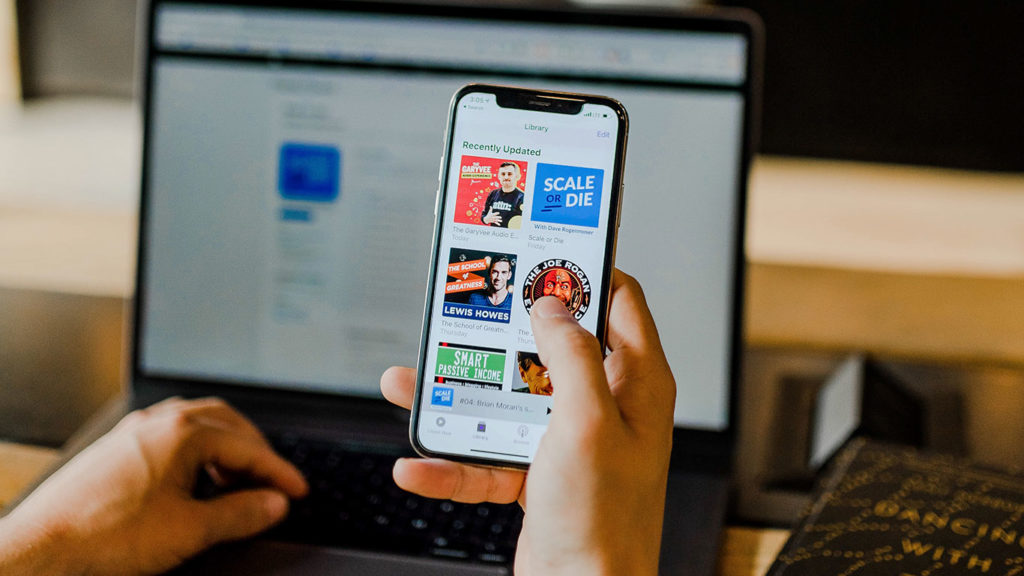
Differing from radio, podcasts are pre-recorded, produced audio programs that are accessible on-demand to listeners online via the application of their choice. We will take a little time to discuss how this distribution system works later on.
Podcasts are often, but not always, focused around a specific topic (e.g. current events, mental health, autosports, etc.) or format (interviews with interesting people, short storytelling, how-tos etc.)
Who Listens to Podcasts?
The simple answer is everyone. Podcast listeners include members of every demographic and generation. In the United States:
- 55% of Americans (age 12+) have listened to a podcast
- 37% listen to podcasts at least once a month
- Nearly a quarter of American listen to podcasts weekly
- The majority listen at home or in the car/during their commute
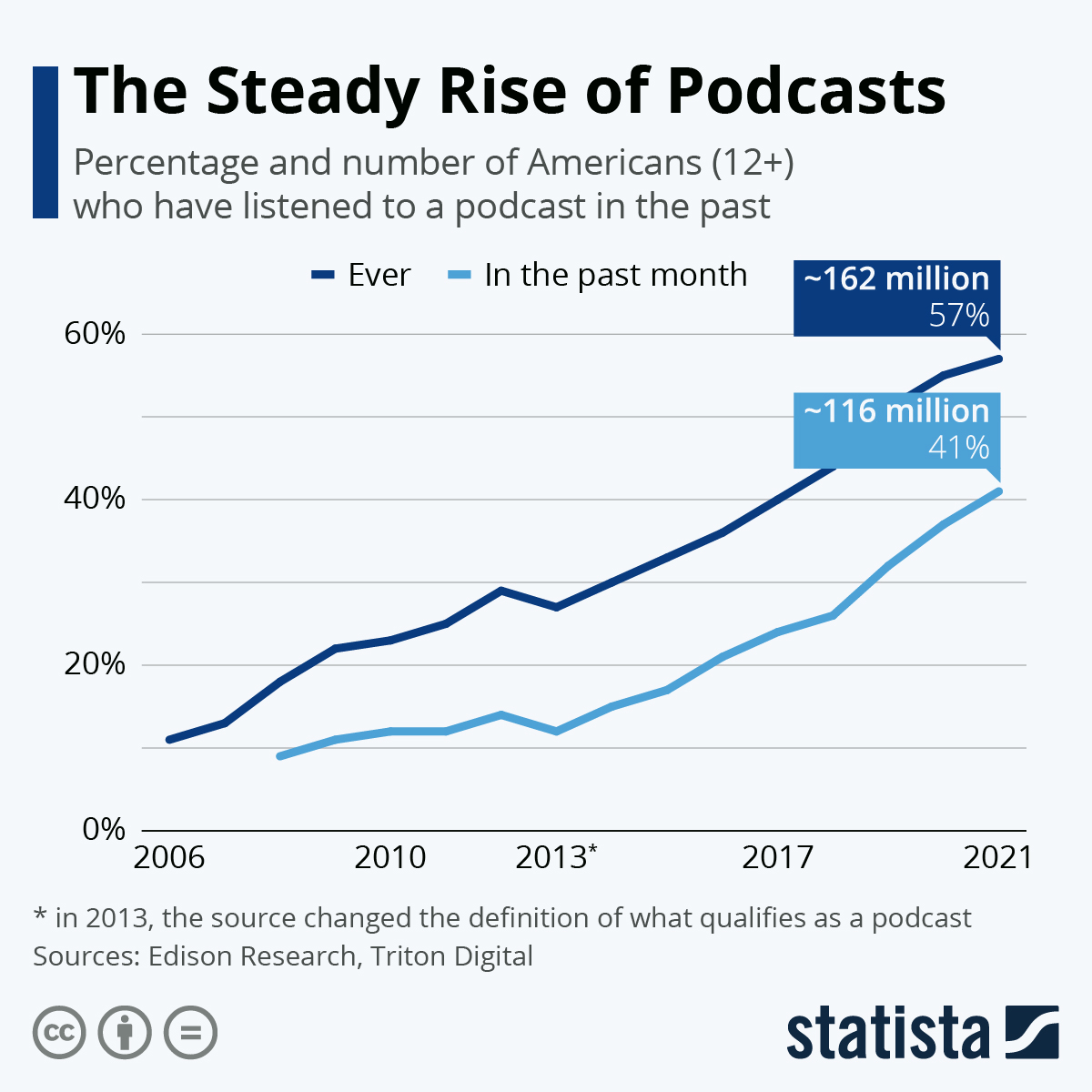
Why Start a Podcast?
Podcast fans represent a unique audience in the sense of how and where they listen. Listeners most often engage while doing some other task (morning commute, household chores, etc.), which essentially makes them a captive audience. Once they’ve started listening to your podcast, if you’re moderately interesting, they may listen to the entire episode because they’re occupied with another task and undistracted by third-party advertisements (unless you as the podcast producer deliberately put them there), notifications or social media—at least they ought not to be, especially if they’re driving.
If your content is solid, users will “subscribe” to your show, which means they will receive periodic notifications whenever you publish new content. Differing from social media or advertising, this dynamic represents free and reliable distribution of your content.
Because it’s still a bit of the “wild west” in the podcasting world, new podcasters and independent producers have a great opportunity now to reach audiences without third-party ads and distractions.
Table of Contents
Content: Planning & Production
- Choose a Topic
- Decide How Long Episodes Should Be
- Decide How Frequently to Release Episodes
- Develop Your Episode Content
Strategy
Like any business person worth their salt, you know that you need a good plan before you just start recording podcasts. Let’s look through some of the elements you can consider before you begin recording.
1. Should I start a podcast?
Before we address purpose and audience, let’s first ask the question, “should I even be starting a podcast? Is this the right way for me to promote my business, organization or brand?”
In general, unless your business is a monetized podcast, podcasting is not going to directly drive sales. Rather they represent an indirect marketing opportunity.
Why? Because a podcast is not about you or your business or even your topic. A podcast is about your audience.
When you start, you’re making a commitment to your audience. You’re forming an agreement that you’re going to be there on a consistent basis bringing them the content they’re looking for. In return, they will show up for you week after week to listen and learn from you.
As the relationship between you and your audience increases in rapport, audience members will grow to trust your voice as an authority in your industry/field of expertise. Then, they can choose to respond to an ask for engagement with your brand or business.
However, when you break this agreement by focusing on sales, delivering poor quality or failing to be consistent, there’s a potential that it can hurt your brand, which is why it’s a good idea to think seriously if you’re up starting a podcast before you get too far down the line.
2. Purpose: Keep Your Objective in Mind
Primary Goal:
Serve Your Audience
Think about why you are creating a podcast, and what do you want your audience to do?
Here are a couple of examples:

A mental health practitioner’s podcast may have the goal of increasing awareness and understanding about mental illness. They want audiences to either A) find healing for their problems or B) support a friend in their journey of healing.

A marketing company may have a podcast that discusses current trends in the marketing world. They want audiences to become more effective in telling their company’s story.
This is the point of my article where I expect to lose a number of you because if your only goal is for audiences to “buy my product” or “pay me for a service,” then I suggest you give up on doing a podcast. It’s fine (and a good idea) to have as a secondary goal, but the primary goal of your podcast should be one of the three Es:
Podcasts exist to educate, entertain and edify.
Podcast listeners hate being sold. More than ever before, today’s audiences value authenticity and honesty. Even if you don’t come out and say it, your listeners can tell if you have a sales agenda.
Secondary Goal:
Your Business
At the same time, audiences are understanding that you’re a human and have bills to pay like the rest of us, which means it’s okay to discuss sponsorship or your business, so long as you do so in an honest way.
3. Audience: Create Your Persona
Think about the audience you want to reach. What’s important to them? What value can you bring to them through the podcast?
If you’re having trouble coming up with answers to these questions, try developing just one or two personas.
A persona is a fictional character you develop that represents a greater audience. When you are developing your persona, in addition to ‘who’ your character is, you might also think about what interests them, where they’ll be listening to your podcast, and what things are challenges in their lives. What problems do they have that you can help them overcome?
As a simplified example, if your topic is DIY life, and you want to speak to homeowners, you could create a fictional character named “Jim”:

- Name: Jim Bob
- Occupation: Loan Officer
- Daily Commute: 35 minutes (one way)
- Vehicle: Midsize SUV
- Age: 36
- Family: Married with one kid and one on the way
- Home: Recently became a first-time homeowner. Purchased a starter home as a fixer-upper.
- Hobbies: Enjoys DIY on the weekends, camping with family and yard games like bag toss.
- Challenges: Operates on a limited budget; is often distracted from DIY projects by needs of family.
Now, when I develop my episodes, I only need to focus on having a conversation with Jim. I can talk about how “a long time on the road can be rough” without having to be considerate to people who bike to work in 10 minutes. I can show sensitivity and understanding of Jim’s family life without worrying about offending people who aren’t married or don’t have kids. Put simply, the persona lets me talk naturally without reducing my content to milquetoast, one-size-fits-all babble. I’m just talking to a friend—someone I know.
When you try to speak to everyone at once, you end up speaking to no one at all.
Creating content for one person is a lot easier than trying to create content that will make everyone happy. The irony is that while you may lose a few disinterested people here and there, your podcast will become overall more approachable and easier to develop.
Content: Planning & Production
1. Choose a Topic
Find a niche—something to set you apart. Everyday, the podcasting world grows more crowded, which is why having a unique take on a stale topic may give you the edge you need to stand out.
Be realistic and talk about what you know. It sounds like obvious advice, but the farther outside your area of expertise you go, the less meaningful and authentic your voice will sound.
2. Decide How Long Episodes Should Be
Developing podcasts, especially as you’re starting out, is time-consuming business. I regularly produce a podcast on mental health, and I’ve discovered that it can take 6+ hours to produce a single 30-minute episode. You need to consider the time for ideation, content development, recording and editing as well as the time it takes to write metadata and distribute your podcast across several channels.
Your first episode(s) should be short. When ranking, Apple Podcasts puts a great deal of emphasis on how far listeners make it through your episode. So if you start with 2 hour episodes, your rankings may be penalized when the majority of your audience bails in the first 30 minutes.
It’s a wide range, but depending on your show’s audience, I recommend a length of between 20 – 50 minutes per episode.
Think back to your personas. When and where do you think they’ll listen to your show? Remember that most folks listen to podcasts while multitasking (driving/doing chores). If your episodes are too short, they may get annoyed by fumbling with their phone to queue up another episode. And if they’re too long, they may be frustrated that they can’t get through your content in a single sitting.
3. Decide How Frequently to Release Episodes
How frequently you post really depends on how much you’re able to produce. But more important than releasing a lot of episodes is consistency. You can have a great deal of reach and impact with a monthly, bi-weekly or weekly podcast, as long as you’re posting consistently.
One thing that can help with this is recording podcast episodes well in advance. Unless you’re talking about current events in the news, most episode content is just as relevant today as it will be months from now.
Try to have at least 4 or as many as 8 episodes pre-recorded so you can easily catch up even if you get behind. That way you don’t find yourself missing deadlines or rushing low-quality content out the door when publishing day rolls around.
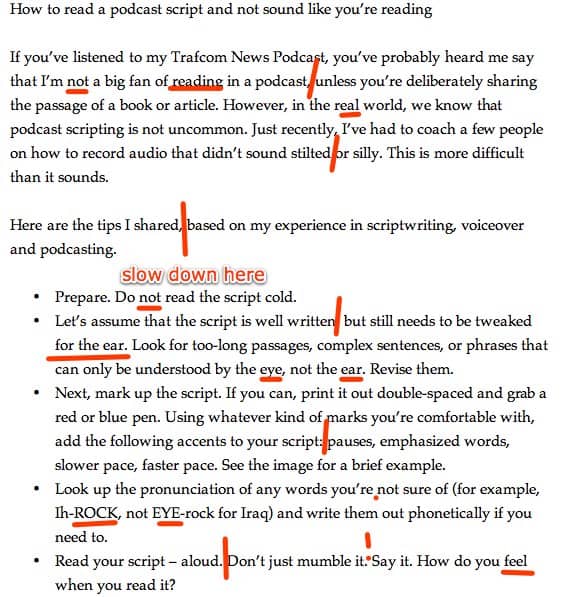
4. Develop Your Episode Content
There are a number of styles podcasters use when creating the actual content of their episodes:
- Go Off the Cuff: For those with complete confidence in their ability to be spontaneously interesting for 30+ minutes, going completely off the cuff is a great option. On the other hand, a complete lack of planning can be painfully obvious to your audience. While inside jokes and unguided banter may seem really interesting to ourselves and friends, it doesn’t make for the gripping content. If your audience gets bored, they’ll move on.
- The Full Scripter: Then there are the folks in the opposite camp—unless every word is written and scripted in advance, they’ll find themselves stumbling over their words or forgetting important points during the recording. A full script can be helpful, especially if you have really technical information you want to convey, but it can also come off as wooden and unfeeling.
- The Middle Ground: For the rest of us, I recommend a meeting of the two. Start with your episode topic, and produce a general outline of what you want to cover. For key points, you might even read a sentence or two verbatim from your outline. If it’s an interview, write out the questions you want to ask in advance, but leave space to go off script if your subject wants to take things in a different and interesting direction.
Content: Audio Recording & Editing
There are literally hundreds of articles out there that will do a lot better job than this one to recommend the latest and greatest technology for recording and editing your podcast. So I will keep this section brief.
Depending on the level of production quality you’re aiming for in your podcast, your technology investment can be significant. For podcast beginners, I recommend starting small and progressively adding equipment as you need it.
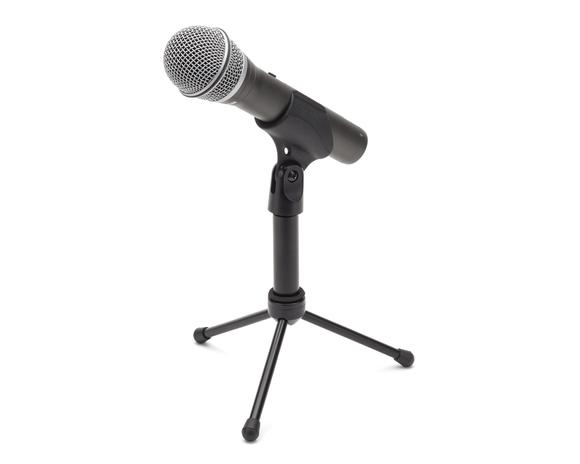
Microphones
You should have one microphone for each speaker on the show. If you’re doing a solo podcast, one microphone will be ample, but if you plan on having a co-host or regular interviewees, you may want to grab a couple of mics to get started.
I like the Samson Q2U. It looks kind of like a Shure SM 58 dynamic mic, but it’s a lot cheaper, includes both USB and XLR outputs, and you can get it with a kit for podcasting like this one.
Pro Tip: Whichever mic you end up going with, please remember that you need to talk into the mic. Podcasting microphones are optimized for audio produced within a few inches of the mic. If you’re constantly leaning back and forth or walking around the room while you talk, you’re going to have a real challenge in the editing room.
Recording
I like to keep things simple, so I plug my USB mics directly into my computer and record into Adobe Audition. If you have more than one USB mic, you’ll need a special driver to make sure your computer can record both mics at the same time (by default neither Windows nor Mac can). I use ASIO4All.
If you’re not looking to throw down for an Adobe subscription (I don’t blame you), you can look at Audacity as your digital audio workstation (DAW). It’s not as beautiful, but it will get the job done.
And if you are interested in a more reliable interface hardware, a lot of podcasters swear by the Focusrite Scarlett. You can use this to interface any XLR mics via USB with your DAW.
Editing
Whichever DAW you choose, you’ll want to reduce your editing time as much as possible. It’s easy to spend hours editing to make sure that everything is perfect. Don’t do this.
You want to make sure that you edit to some degree, especially if you have large mistakes or boring segments in your recording. However, as a general rule, if you plan and record your audio correctly, you can significantly reduce your editing time. Even if you have a few mistakes in there, they tend to add credibility and authenticity to your production.
Intro & Outro
A short (less than 30s) intro and outro will give your show a polished and professional feel. Start with an interesting hook, and then let your audience know exactly what your podcast show is about. Use the same intro and outro on every episode to establish your message and purpose.
For inspiration, listen to a few of your favorite podcasters and look at what they do to introduce their content.
Introductions are more fun when they have music. Try searching for something fun from Audio Jungle or Premium Beat, which both provide royalty-free background music.
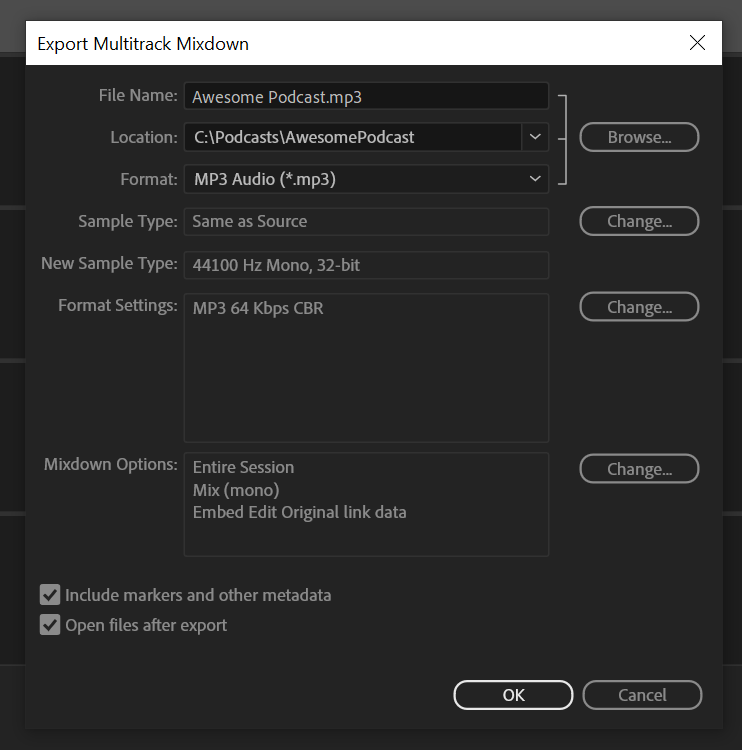
Exporting
A lot of rookie podcasters make the mistake of thinking a higher-quality export is better. Podcasts may be the one place where this is not true. Unlike music platforms, podcasting platforms will not optimize or compress your audio for you. Instead, the files you upload are downloaded directly onto your listener’s devices.
Your listeners will not thank you for decimating their monthly data usage. Nor will they be happy to sit there while your episode buffers because their data connection can’t download it fast enough.
If you’re like most series and spoken word is the majority of your content, I highly recommend using something similar to the settings below for your final audio file exports:
- 44100Hz, 32-Bit
- Mono (not stereo because many listeners will listen with only one earbud in while they multitask)
- MP3 @ 64Kbps (the vast majority of listeners will not be able to hear the difference between anything higher, unless you’re using incredible mics, and they have amazing speakers in their car)
Content: The Metadata
1. Give Your Show a Great Name
The name of your podcast is a critical component of your promotion. The goal of a podcast name is to give your user a hint of what your series is all about and immediately create enough intrigue to draw them in. It ought to be fun and memorable.
Unless your brand is super-famous (think “Nike” famous), you probably don’t want it to be the name of your show because it won’t draw in your audience. Remember audiences resist being sold—they’re looking to be educated, edified or entertained.
2. Write Your Show Description
Your show description gives you the space to talk a little more about your podcast. Use this space to let audiences know what they’re going to get out of listening to your podcast. While it’s a good idea to introduce the personalities who will appear on the show, do not put information about your business here. Audiences need to hear how their lives will be better and their problems solved if they listen to the show.
3. Produce Show Artwork
I know we ought not judge a book by its cover, but the simple reality is that people do. Your show artwork offers another chance to stand out in a sea of “all looks the same.” Get a vision for your cover, and if you’re not savvy in Adobe Creative Suite, look at a free account on Canva.
While you’re designing, here’s a few things to avoid:
- Cliche RSS icon images
- Pictures of old-fashioned microphones and radio waves
- A large version of your company logo (small is fine)
- Small fonts that will become illegible when viewed as thumbnail
For formatting, every organization has their own requirements for podcast image sizes. However, Apple Podcasts continues to set the gold standard for formatting, so your best bet is to conform to their requirements. You can find the most recent versions here on Design Your Artwork, but at the time of writing this article, they specify a 3000×3000 px JPG format.
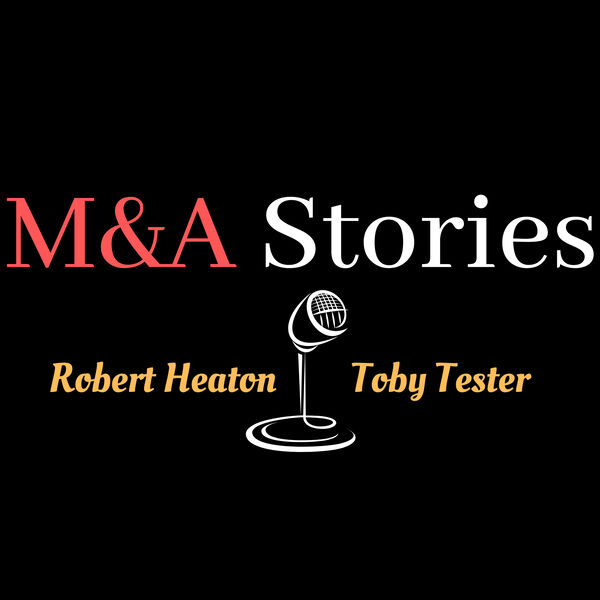
Boring design
Uses corny podcast microphone
No brand included
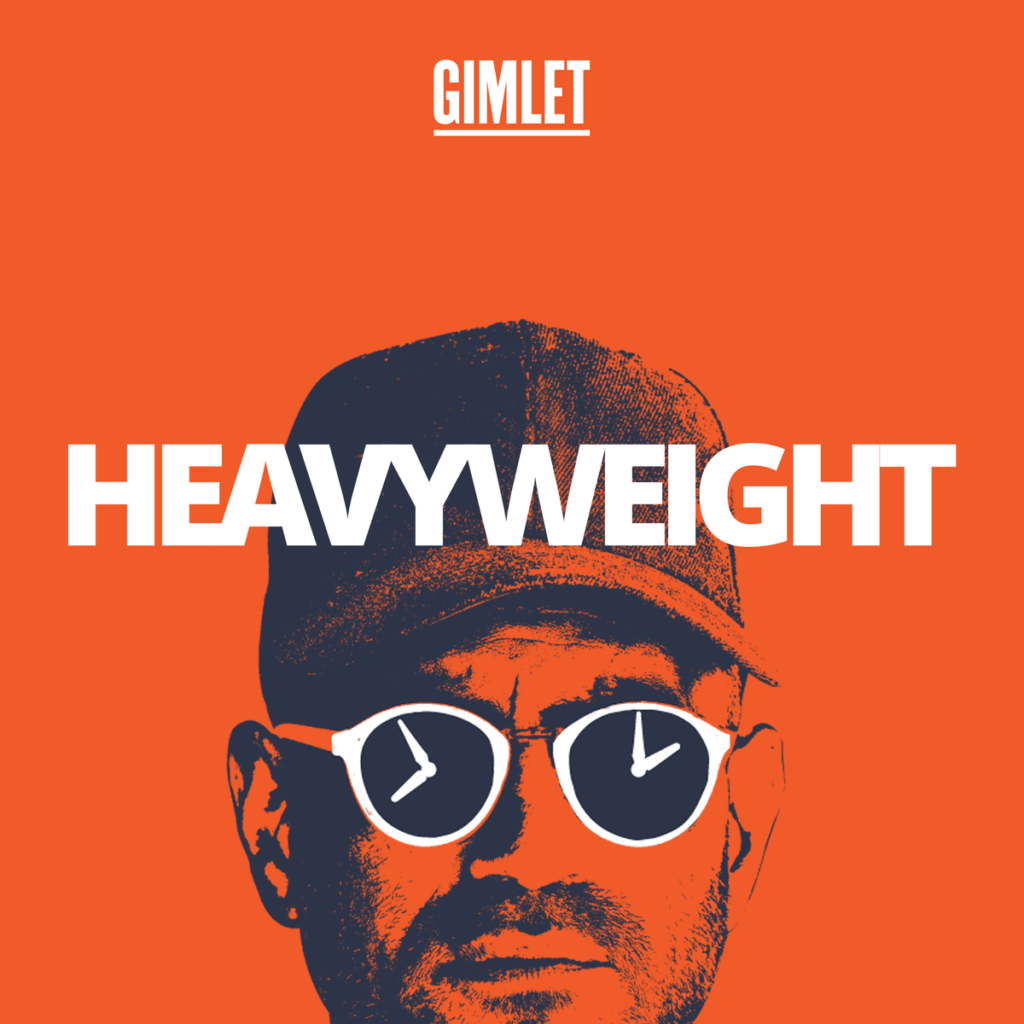
Colorful
Intriguing
Includes branding
Distribution
Unlike radio, podcast series are not limited to a single station. Because they’re independently hosted, a podcast can be ‘syndicated’ for listening on any number of different podcast apps. The most popular include Apple Podcasts, Google Podcasts, Stitcher and recently Spotify has been making huge gains in this space.
1. How Podcast Distribution Works
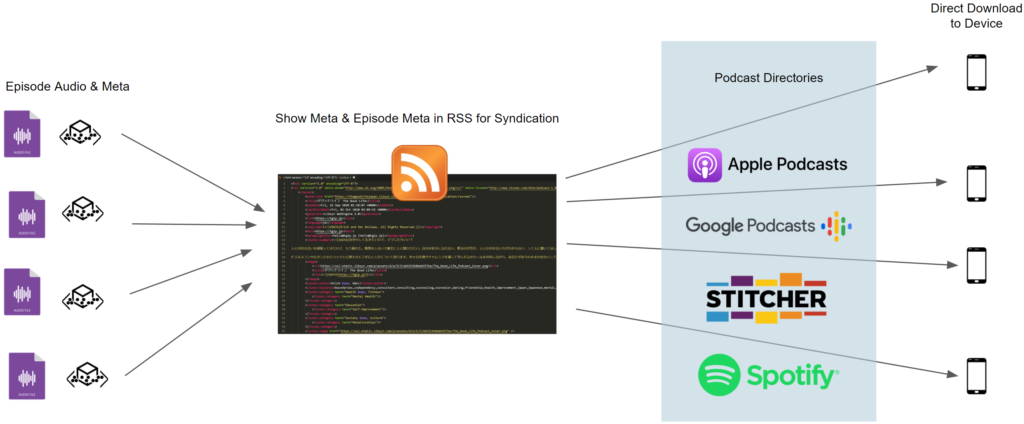
Podcasts are syndicated through an RSS feed. RSS (really simple syndication) is an XML feed or coded file that includes information about your show (title, description, cover art, etc.) and structured information about each episode (title, description, art, length, etc.), and most importantly, a link to your hosted audio file.
Podcast directories interpret RSS feeds to show information about each podcast and episode, and they facilitate downloads directly from your hosted file to their users’ devices.
2. Podcast Hosting
You can, if you want to, take a DIY approach to podcast hosting. You can host the files on your own server, produce your own XML, and manually update these each time you launch an episode. In the early days of podcasting, I did this for a client because podcast hosting services were virtually non-existent. It was gruellingly boring work, which is why I recommend using a podcast hosting service to manage the heavy lifting for you.
3. Podcast Hosting Services
From free services like Anchor to paid/freemium services like Buzzsprout, you have a lot of podcast hosting services to choose from. I recommend doing research on each of these services to learn more about what they offer.
Podcast Hosting services provide a number of baseline features:
- Managed hosting for your audio files
- Automatic creation and management of your RSS feed
- In some cases, automatic distribution of your content
- Recommendations and resources to help you monetize and promote your content.
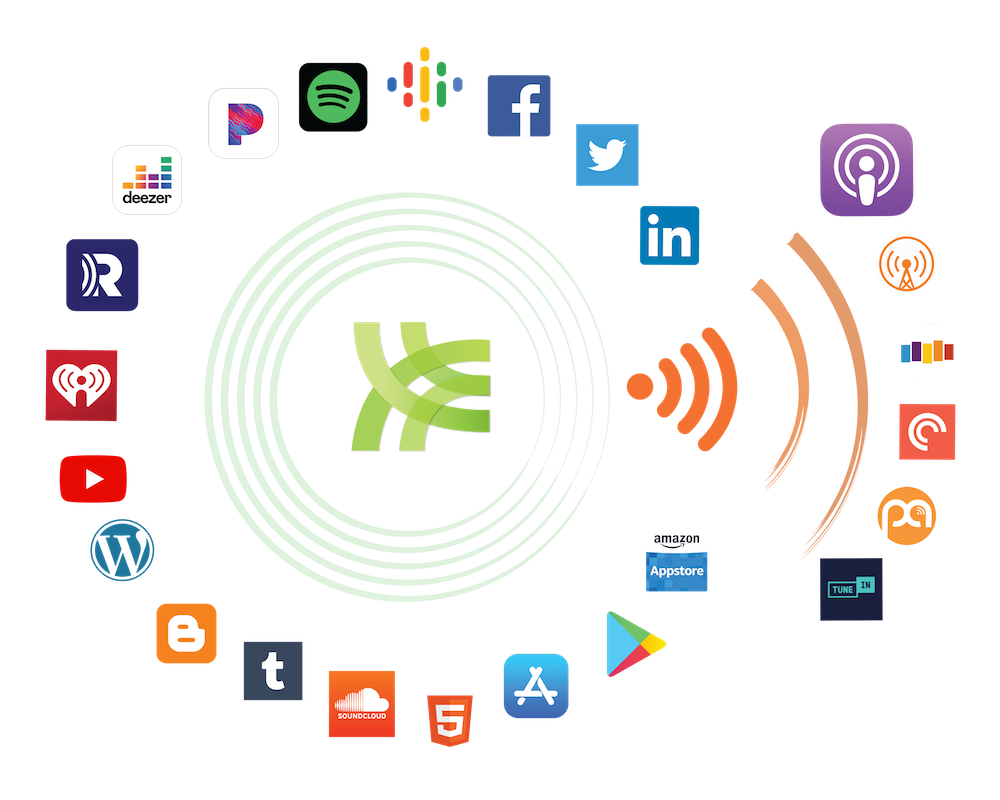
For my podcast, I use Libsyn. Starting from $5/mo, this is a paid service, but I strongly believe in the old adage, “you get what you pay for.” Besides distributing to the classic podcast services like Apple and Stitcher, Libsyn links into Facebook Pages and YouTube, taking my episode cover art and audio, and automatically encoding and publishing a video on my behalf. This lets me be everywhere all at once while I make updates in a single dashboard.
4. Submitting Your Podcast to Directories
While a number of podcast directories will automatically pick up your podcast, there’s a few directories where you will want to manually submit your podcast. This is a one-time requirement, and claiming your podcast with these directories also gives you access to analytics, ranking and listening behavior information.
Once you’re ready to launch, get your RSS link and submit it to the biggest players:
Launch & Promotion
Let’s talk about marketing your podcast. Even if you have the most incredible content and register your podcast on every fathomable directory, if you don’t promote your show, you can expect that no one will listen.
Podcast promotion is about building momentum.
People like listening to things that are popular, trending and well-reviewed. Especially since listening to a show can represent a significant time investment (30+ min), folks want to know that what they listen to will be worth their while.
1. About Apple Podcasts Ranks and “New & Noteworthy”
We discussed earlier how to submit your series to the Apple Podcasts directory. While Spotify and others have made big gains in recent years, Apple Podcasts continues to dominate a whopping 58% of the market, making it the most important place for you to succeed in your podcast promotion work.
A key feature of Apple Podcasts is their New & Noteworthy section. This is a featured section that loads on the front page of the app and iTunes that offers an opportunity for new and fledgling podcasts to get noticed.
However because there are so many new podcasts launched each week, there’s considerable competition to make it into these rankings. New & Noteworthy applies to podcasts that are younger than about 8 weeks old.
Once you submit to Apple Podcasts, you (supposedly) have an 8-week ticking clock to get your show into New & Noteworthy.
If you can reach this list, or a high ranking within your podcast category, you can expect to add dozens if not hundreds or even thousands of subscribers per episode.
Apple’s exact ranking algorithms are not public, but there are few things we know have a big impact:
- # of new subscribers
- # of written reviews (either good or bad)
- Playthrough rate: how many of your listeners listen all the way through your episode to the end
- # of downloads in the last 7 days
- # of downloads in the last 30 days
- # of ratings (regardless of actual star-value)
- Frequency of publishing
It should also be noted that making it into New & Noteworthy is not everything. If you don’t appear in this list, don’t worry about it because there are lot of other things you can do to promote your content.
2. Develop a Marketing Plan to Reach Critical Mass
Because podcasts are all about building slow momentum, the more you can market in the beginning, the faster you’ll hit that “critical mass” where your podcast audience will begin to grow on its own. A few things you may consider:
- Email Marketing: Send out a blast to your business’s email marketing network and let folks know about the new show.
- Social Media Marketing: Start building up hype for your new show even before launch. Make sure you post each new episode along with that episode’s cover art on the social media networks where your show has the most presence.
- Social Media Presence: If you’re serious about your show, consider creating dedicated pages for your podcast (separate from your business pages). Use these pages to cultivate following and listen to feedback, questions and ideas from your customers.
- Use a Giveaway to encourage subscriptions.
- Write Personal Emails: This is one of my personal favorites. Write individual messages to your closest friends, family members and business connections letting them know what the podcast is all about and what they can do to help.
The call to action for your marketing efforts should always focus on ways to build your audience, not your business:
- Subscribe on Your Preferred Platform (Apple, Stitcher, Spotify, Google, etc.)
- Write a Written Review, especially on Apple Podcasts
- Comment & Share with your friends on social media.
- Listen Through the full episode.
The objective is to build momentum before you attempt to monetize your podcast brand.
Absolutely Shameless Plug
Here’s our absolutely shameless plug. We’re expert storytellers, and we’ve got the know-how and experience you need to produce and market your podcast for business. If you need help producing a podcast, or if you just want to talk some of your ideas through, let’s get in touch.

